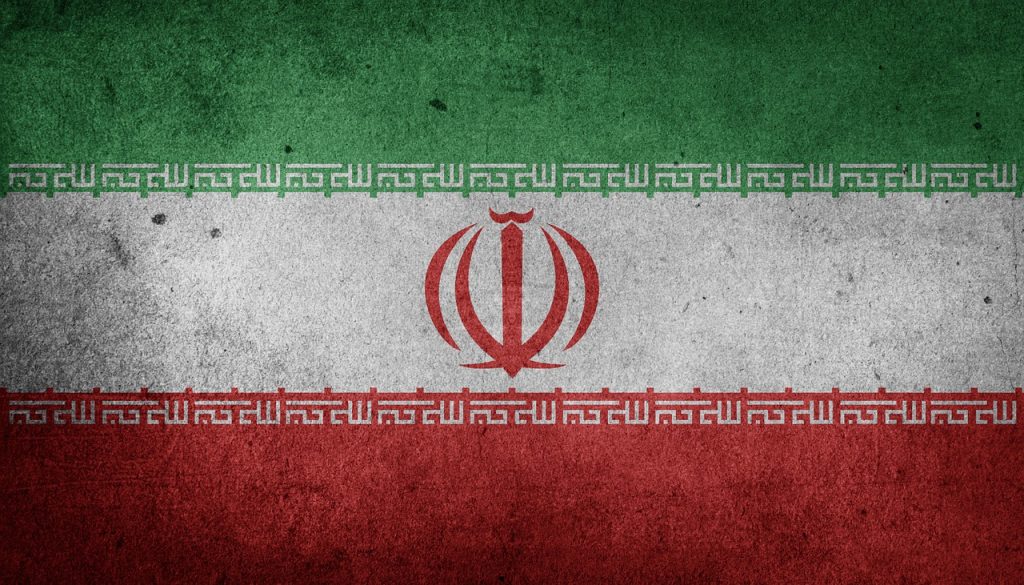Even before Donald Trump took office four years ago, the media prophesied a major break in relations with Iran. For months, in the event of a Democratic victory in the 2020 presidential elections, this same media has promised us another 180-degree turn. And yet, the results of the next US presidential election are unlikely to fundamentally change the Iranian-American relationship. Regardless of the outcome of the ballot box, one should not expect a “revolution” in Washington’s policy towards the Islamic Republic of Iran. There is no indication as of yet that Donald Trump is considering revisiting his “maximum pressure” strategy in the event of a second term. If he were to replace him as President of the United States, Joe Biden promises to take a more moderate approach – without calling into question the basic assumptions that underlie the Iranian policies of his predecessors. Oscillating on the surface, this policy can indeed give the impression of incessant ruptures and contradictions. But a more in-depth analysis shows that, beyond the differences in styles and means, it remains surprisingly constant – guided by structural factors that go beyond the inflections given to it by successive tenants of the White House. Let us return here to the reasons for this continuity and to some of its potential implications.
The first reason, arguably the most important on the American side, has to do with the permanent geopolitical parameters that invariably set the axis of Washington’s policy vis-à-vis Iran. To realize this, one must step back from history, take a “macro” perspective and look at the direction that this policy has drawn over the past four decades. Since the Islamic Revolution of 1979, Washington has been in “recovery” mode – which translates into double-speed play. On the one hand, it is about re-engaging the Islamic Republic through dialogue and some form of economic, diplomatic and military bargaining. On the other hand, it is a matter of limiting the Iranian regime’s capacity for nuisance on the regional and continental scene. Despite the hot and cold periods, the various American administrations have all composed around this geopolitical partition and its binary logic. The only difference is that: Democrats generally favor negotiation, international consultation and multilateral approaches – without, however, abandoning the use of coercion. As for the Republicans, they favor unilateralism, interventionism, force and intimidation without ever giving up on bringing the Iranians back to the negotiating table. Beyond the formal variations in style and tone, all administrations have practiced with Iran the policy of “firm-openness” and “negotiation-neutralization.” This two-tiered approach is found in various forms in the Carter Doctrine, in the more or less uncompromising posture of Reagan and the Bush father and son, in Clinton’s Dual Containment or in Obama’s Outstretched Hand option – but in the end it always obeys the same underlying logic dictated by immutable structural factors.
Adept at what he himself calls “the art of the deal,” Trump has only substituted aggressive sales techniques for the muffled haggling of those ahead of him in the Oval Office. A head-on, if not brutal approach, which, however, is not fundamentally different from the “firm-deal” policies of its predecessors in that it also aims to bring the Iranians back to the negotiating table. As Dombrowski and Reich point out, “[so] as to be alarming for his supporters and reassuring for his detractors, everything so far suggests that President Trump […] has also adopted, and will continue to adopt, that which President Obama had ironically called the ‘Washington Playbook.’” At the end of Trump’s first term and despite these spectacular reversals, experts tend to relativize the thesis of a “revolution.” In their eyes, while Trumpism is undeniably giving a new tone to American diplomacy, it nonetheless continues to reinforce pre-existing tendencies. Some stress that the changes observable at the tactical level and characterized by the use of new “means” should not be confused with structural changes relating to the “ends” of American foreign policy which, for their part, remain essentially perennial. Others conclude that, behind the accents of rupture, the Iranian policy of the Trump administration is in line with that of the Obama administration with regard to its guiding principles, namely to reduce the regional influence of the Islamic Republic while preventing it from falling into the hands of the great Eurasian powers.
As for Joe Biden, while he irrevocably condemns Trump’s “maximum pressure,” he fully embraces the foundations of the “firm-deal” policies of his other predecessors. On the surface, everything about the Democratic candidate’s rhetoric points to a major shift in Washington’s Iranian policy. “We urgently need to change course” he declared in an interview given to CNN, adding in particular that: “By any objective measure, Trump’s “maximum pressure” has been a boon to the regime in Iran and a bust for America’s interests.” However, a close reading of this speech reveals that these disagreements displayed with the Trump doctrine lie more in form than in substance. In the same interview, Joe Biden specifies: “there is a smart way to be tough on Iran, and there is Trump’s way. “While he advocates reconsidering the means used over the past four years, he remains extremely conventional, even conservative, with regard to the objectives pursued. Not only is it a matter of preventing Iran from acquiring atomic weapons, but also of bringing its leaders back to the negotiating table to obtain – what is more – an agreement more inclusive and more binding than the JCPOA signed in 2015 – an agreement expanded to end the Revolutionary Guards’ “destabilizing activities” in the region and to suspend Iran’s ambitious ballistic missile program. So many clauses of a new agreement that the Democratic candidate intends to impose on Tehran and which touch on essential aspects of Iranian sovereignty while echoing the policy of “firmness-openness” and “negotiation-neutralization” practiced by Washington over the past four decades.
The other major reason why the result of the US presidential elections is unlikely to fundamentally change Iranian-American relations is that in Tehran, the Islamic leaders do not expect much and, frankly, they even display the greatest skepticism. A democratic victory would certainly allow the Iranian regime to catch its breath and hope for a relaxation of the effort of political, economic and military strangulation undergone for almost four years. But, exercised in a more diplomatic way, they know full well that American pressure would not completely cease. Importantly, the “Biden Doctrine” would, despite everything, continue to threaten Iran’s vital strategic imperatives – imperatives which, even approached with the greatest courtesy, will remain non-negotiable in the eyes of the Iranians. Indeed, the placing under supervision of nuclear and ballistic programs added to the significant decrease in regional activities in Tehran presents the disadvantage of touching on crucial points on which the Iranians cannot concede simultaneously (depriving themselves of nuclear life insurance and , at the same time, of the protective sphere of influence) without risking weakening the internal and external sovereignty of the regime. In other words, red lines. As Richard Nephew, senior researcher at the Center on Global Energy Policy at Columbia University and former State Department official, explains, the demands previously made by Westerners and now taken up by Biden “are beyond Iran’s willingness to even discuss.” Added to this is an additional reason why it would be naive to think that a Democratic mandate would automatically translate into an improvement in Iranian-American relations: the last few years have been accompanied by a major strengthening of the “hardliners” who, already given winners in the next Iranian elections, are more reluctant than ever to make further concessions to Washington.
The final reason, but certainly not the least, for why Iran will not accept the new conditions offered by a different president is because of Tehran’s strategic positions in recent years – including some even before the election of Donald Trump. Among these strategic positions, the most important is undoubtedly the major reconciliation made with the members of the Shanghai Cooperation Organization (SCO), foremost among them Russia and China. Eurasian powers which, in addition to promoting a more multipolar world order, share with Iran a fiercely Westphalian posture that does not suffer any questioning of the principles of sovereignty and non-interference – including in the field of human rights. This is proven by Iran’s candidacy for the SCO and the new 25-year strategic partnership being negotiated between Tehran and Beijing. Certainly, the Iranian leaders, eminently pragmatic and opportunist, would not shy away from the possibility of garnering some economic or diplomatic gains if the West offered them the chance, but they would do so with caution and restraint as the regime is now wary of this West, in which, to use the words of the Iranian foreign minister, Iran “never really had any hope.” In the same interview, this same Zarif, however from the camp of moderates, declared in 2019, that Iran has resolutely turned towards the “Eurasian bloc” and that “the future of our foreign policy lies in that direction.” So that beyond the political changes and ad hoc decisions to which its development is often wrongly linked, the Iranian-American relationship, much less fluctuating than it seems, obeys above all the deep forces of the game of big powers and its inexorable geopolitical logic.





Comments are closed.